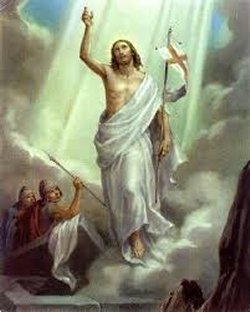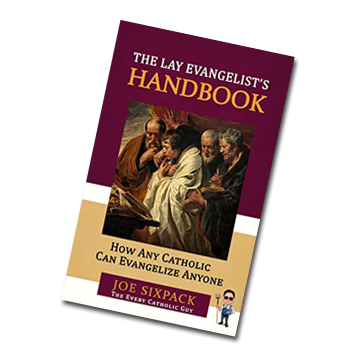Catholic Heroes… St. Laura Of St. Catherine Of Siena
By CAROLE BRESLIN
There was a woman who possessed classic beauty. Although her looks were not outstanding, she emanated an interior serenity and peace that enhanced her features. Her eyes were alight with wisdom, her forehead free from the lines of anxiety and stress. Her mouth was smooth and always carried a hint of a smile as is common with those who are filled with the joy of the Holy Spirit.
Like her namesake, she loved our Lord and she greatly admired that Italian woman who became a bride of Christ, St. Catherine of Siena (1347-1380).
Juan de la Cruz, a doctor and merchant, married Dolores Montoya Upegui. They had three children: Carmelia, Juan de la Cruz, and another daughter, the middle child, born on May 26, 1874. On the day of her birth, they took her to the church to be baptized, giving her the name Maria Laura de Jesus Montoya Upegui.
Laura was born in Jerico, Antioquia, Colombia, about 200 miles northwest of Bogota. At the time of her birth, the conflict leading to the Colombian Civil War of 1876 was intensifying. The Colombian Liberal Party was agitating to lift the education of the people from the influence of the Roman Catholic Church. They wanted the government to control the education.
During this time, Laura’s father, Juan de la Cruz, left to fight in the war. Whether he died as a result of the conflict or was murdered is uncertain. However, it is known that after his death, the assets of the family were looted. This left the family impoverished with no means of support.
Dolores sent Laura to live her grandfather, Lucio Upegui, and her grandmother. The situation was not ideal and Laura felt unwanted and unloved, abandoned by her family. Her relationship with Christ grew as she meditated on Sacred Scripture and received Holy Communion frequently. She also found much comfort in uniting her sacrifices and loneliness with the sufferings of Christ.
Five years after joining her grandparents, Laura was sent to an orphanage that her mother’s sister, Sr. Maria de Jesus Upegui, managed. Then when Laura was 16 years old, her aunt enrolled her in the Normale de Institutoras of Medellin, a school for privileged children. Despite her lack of refinement and of a formal education, Laura excelled.
One account states that she was not welcomed at the school because of her poverty. Thus she went to an asylum to work with her aunt who was the director.
Ultimately, she graduated in 1893 and began teaching in various parts of her native land, Antioquia. She taught academic subjects as well as the catechism, seeking to spread the Good News of the Gospel.
Eventually Laura became the director of a highly regarded Catholic school. Though the Civil War had ended, the enemies of the Church did not rest. They managed a smear campaign against the school, which resulted in its closing.
About this time, Laura learned about the encyclical of Pope St. Pius X, Lacrimabili Statu, issued on June 7, 1912. This deplored the treatment of natives in South America — slavery, impoverishment, and inhumane treatment, which was against all Church teaching. He implored priests and religious to address this tragic situation and bring the Gospel to the indigenous peoples of the New World.
Laura was greatly inspired by this missive of Pope St. Pius X and, recalling her hope to become a religious after caring for her aunt, became determined to help the natives. Unlike some, she did not seek to turn the natives into replicas of the elite. Rather, she met them where they were, accepting their dress, their language, and much of their culture.
Many congregations and Church leaders as well as civil authorities refused to assist her in her quest to evangelize the people. They were especially reluctant to traipse through the jungles in the interior of the country.
Such rejection did not deter Laura. She realized that if such work were to be done as she envisioned, she must find a way to do it herself. Thus, Laura began looking for like-minded women who would share in her mission.
Laura sought those ladies who would willingly meet with blacks, indigenous, and marginalized persons. Having lived in poverty and suffered humiliations, she embraced the simple life with a heroic charity.
Laura gathered six women to share in the work, one of whom was her 78-year-old mother — still in robust health and active. They sold crafts to raise money for their apostolate and happily received the approval of the bishop of Santa Fe de Antioquia, who also gave them financial support.
Overcoming many obstacles, they ventured through the tropical heat and virgin jungles to the village of Dabeiba, about 155 miles north of Jerico. They arrived on May 14, 1914. The people were skeptical of these strange white women since white men had treated them so badly.
However, they made progress when the people realized they were there to teach them, live with them, and care for them as equals, not as condescending benefactors. The ladies taught them that they were human beings deserving to be treated with respect and dignity.
Unsurprisingly, the wealthy farmers resented the work that was preventing them from mistreating the natives and seizing their lands.
Following the advice of the bishop, Laura founded a religious community: the Missionary Sisters of Mary Immaculate and St. Catherine of Siena on May 14, 1917. This new congregation of sisters broke the old stereotype of missionary work, proving that women also have special gifts for nurturing the faith and elevating marginalized peoples.
From 1917 to 1949 Mother Laura of St. Catherine of Siena opened houses throughout the jungle to help the natives. The sisters willingly made the difficult transition from comfortable living to the challenges of living in the jungles.
Soon the sisters were working throughout Colombia, Ecuador, and Venezuela. Later they were established in 19 countries on three continents.
In 1939 the president of Colombia awarded Mother Laura the Cross of Boyaca in the category of caballero — the equivalent of a knight.
As her health began to decline, Mother Laura spent the last nine years of her life in a wheelchair, beset with ulcers and in great pain. She became bedridden, but consoled all who came to her bedside to console her. She died on October 21, 1949.
Pope St. John Paul II beatified Laura in 2004, and Pope Benedict XVI approved her canonization, which was celebrated in St. Peter’s Square by Pope Francis in 2013. St. Laura of Catherine of Siena was the first canonized woman of Colombia. Her feast day is October 21.
The words that best described St. Laura’s goal were “to make the joy of the Gospel radiate through our words and in the witness of our life, wherever we find ourselves.”
Dear St. Laura, in these days where so many souls do not know about the love that Christ has for them, help us to possess the apostolic zeal you had to save souls, to meet people where they are and to accept them as they are, and to love them as Christ told us to love them. “Love each other as I have loved you” (John 15:12). Amen.
+ + +
(Carole Breslin home-schooled her four daughters and served as treasurer of the Michigan Catholic Home Educators for eight years. For over ten years, she was national coordinator for the Marian Catechists, founded by Fr. John A. Hardon, SJ.)











